
January 02, 2023
While contact centers were once rooms crammed with desks and agents on headsets, those days are in the past. Today’s contact centers have evolved into advanced communications hubs, where agents can interact with customers and with each other in numerous different ways, both inside and outside an office setting.
But that’s just the start.
So what do modern contact centers look like, and what’s next for them? In this post, we'll explore the top trends in contact center technology and see how they’re changing the landscape of modern contact centers.
What are the current top trends for contact center automation?
Let’s start by taking a look at today’s contact centers. We can quickly see three trends that are growing fast (and maybe unsurprisingly, they’re all AI-related):
Real-Time Transcription
Even legacy systems allow you to record calls for reference and training, but now you can get a lot more out of a call than just an audio recording.
Imagine: an entire conversation transcribed as you speak, complete with action items and important questions highlighted for ease of reference.
Now stop imagining, because it’s real.
Modern contact center technology and voice recognition features can now transcribe calls in real time. For example, that’s what Dialpad Ai Contact Center can do—and not only that, it can even send automated call summary emails to meeting attendees with the transcript:
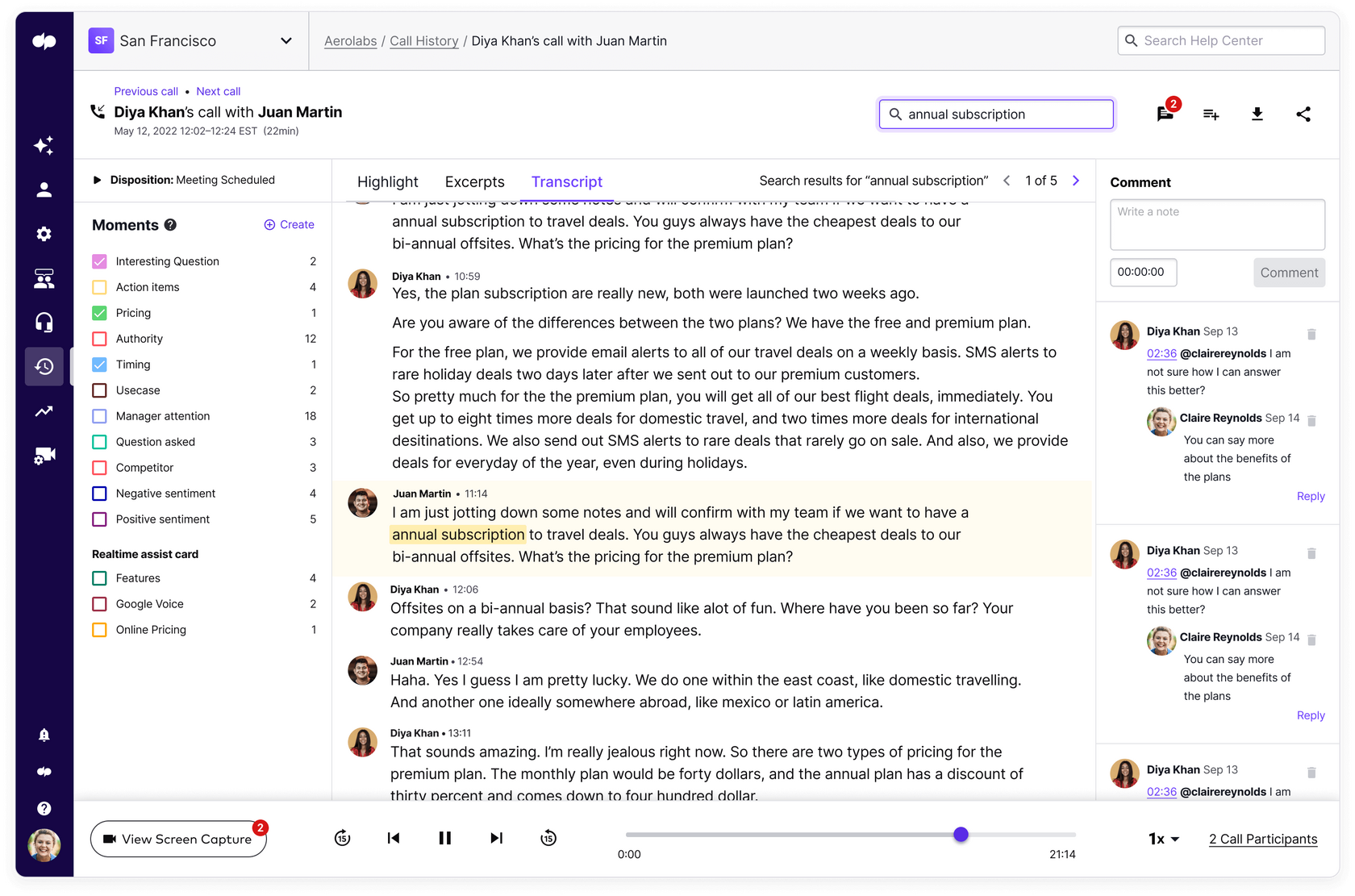
(Smart) Chatbots
Yes, even chatbots have evolved. They’ve gone a long way from the frustrating self-service menus with limited responses that they once were, and are now vital parts of contact centers. Instead of being glorified Help Center search bars, some of today’s more advanced chatbots are incredibly helpful, and can resolve most customer issues before they even speak to an agent.
Companies have been using chatbot features more and more over recent years. In fact, it’s reached the point where the technology is well on its way to being expected by consumers and a necessity for businesses—and for good reason.
For one, customers prefer to deal with problems themselves where possible. Chatbots help speed up customer service by offering a practical way to direct consumers toward self-service solutions that don't require the help of an agent.
For instance, if a customer wants to check the status of their order, they can ask the chatbot, which will be able to look it up and provide all the information instantly. Not only does this resolve the customer’s questions quickly, it also frees up the agent who would otherwise be handling that question, so they can focus on more complex or pressing matters.
Plus, a well-designed chatbot can collect information before the customer speaks to an agent, which saves them time. This helps provide a better digital customer experience by streamlining the process of having a question answered or purchasing a product. At the same time, this helps the agents by giving them all the information they need in advance.
For more complex questions and expert answers, a person-to-person interaction is still the most ideal. But for basic questions like looking up subscription information, account balances, and anything else along those lines, a chatbot can be a valuable tool.
Real-time agent assists
There’s one key piece of technology that makes both the transcriptions and chatbots as good as they are, and that’s artificial intelligence (AI). And that’s just the start of what it can do.
Even with the most highly-trained agents, calls can sometimes take a turn for the worse. In these cases, it's helpful to have AI that can recognize customer sentiment in real-time to help agents and show managers how all active calls are going:
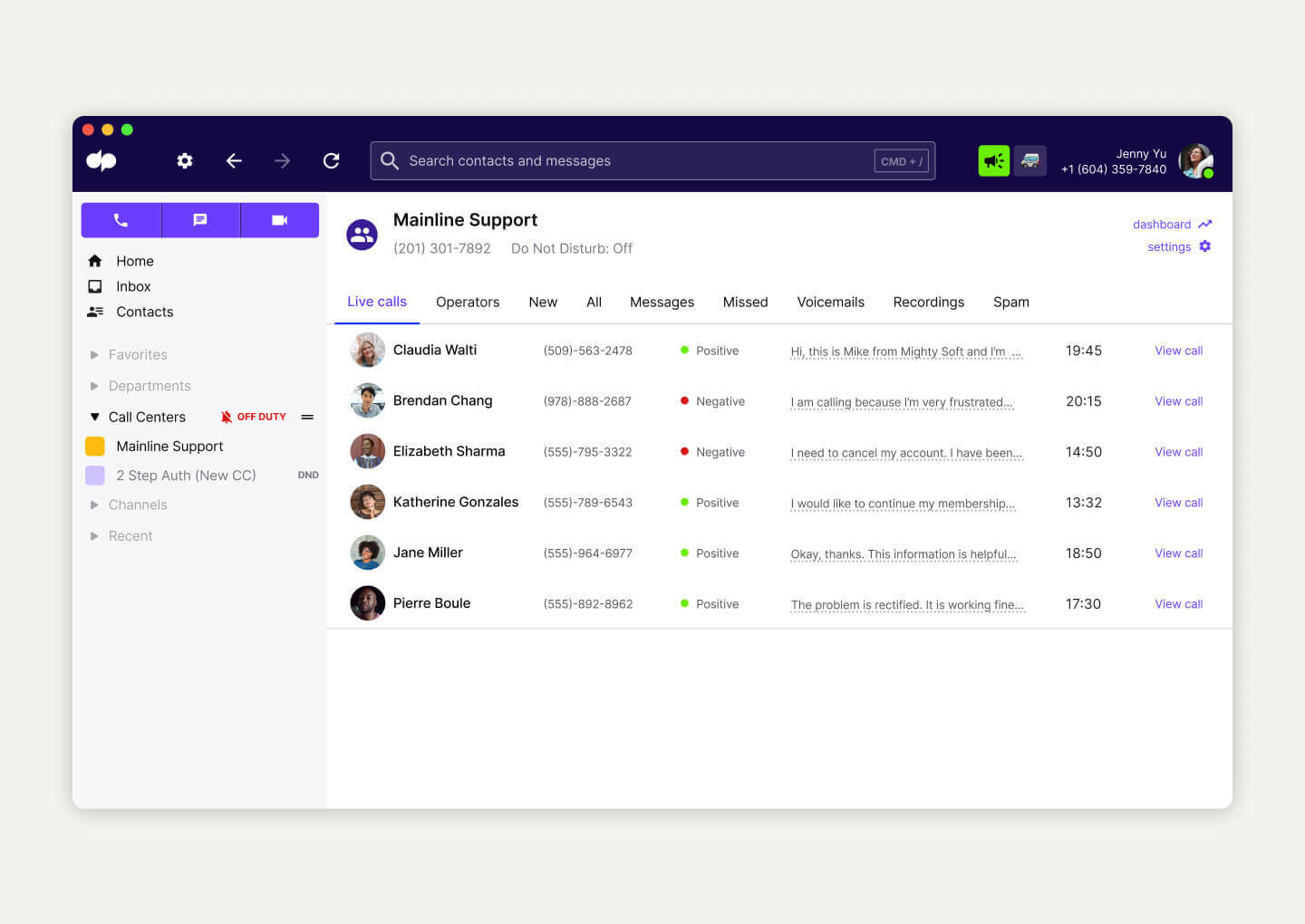
With Dialpad, for instance, managers can even set up alerts so that, should a call start going poorly, they can decide if it's necessary to step in and help the agent—before things really go south.
For calls that don't necessarily require active support from management, Dialpad's Real-Time Assist (RTA) cards can pop up timely information to help agents quickly resolve customer questions and provide better customer experience.
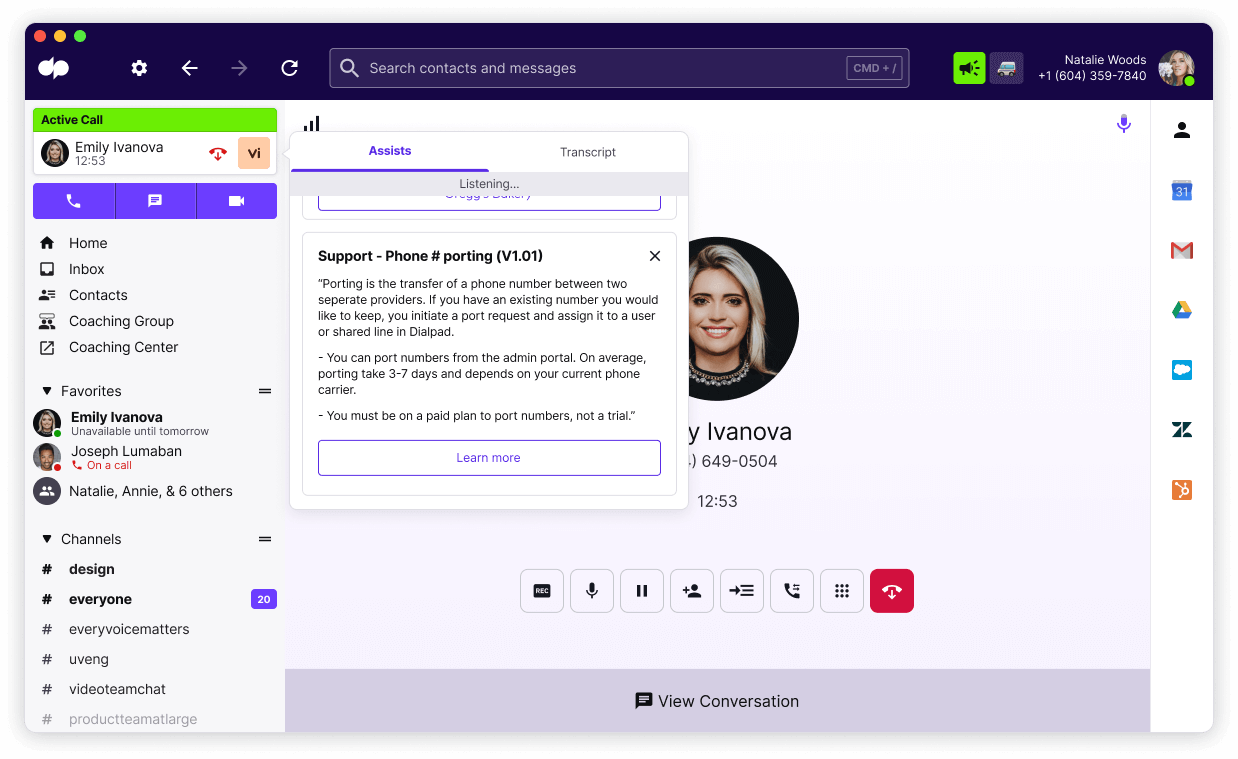
All managers have to do is create RTA cards for the topics their agents are having the most trouble with (let’s say lots of people are calling in about an issue with “Feature X”). When a customer asks a question about Feature X, agents will now get an instant RTA card popup on their screen with notes on how to talk about Feature X’s issues and possible solutions.
What’s changing in the future of contact centers?
While several advancements are already happening, there are more trends that are taking off and will reshape the contact center of the future. We’re already seeing them start to grow, and they’re set to become even more essential in the days to come:
Omnichannel support
If a contact center is set up for phone calls, can it also handle email? What about SMS messages? Social media? As consumers become more accustomed to communicating using several different channels (and have their own favorites to use), omnichannel support gets all the more critical to the success of your contact center.
Some customers simply like getting answers to questions over the phone. Others prefer text-based communication such as email, text, or live chat. Sometimes, despite consumer preference, an issue is so complex that it's difficult to work through without video or even screen sharing.
No matter what the case is, if you're going to provide the best customer experience you can, you need to be prepared to meet the customers where they are.
On top of that, you’ll also want to make sure that all the contextual information is accessible no matter what channel they use.
You probably also know the power of maintaining information about a customer case. We've all been on the other end of customer service calls, and we know how frustrating it can be to tell the same story numerous times. So when a customer contacts you through multiple channels, having all their information on hand without them needing to repeat it can make a big difference.
With Dialpad, you can easily integrate your favorite sales enablement or customer support tools to consolidate customer communications and data onto a single screen. Agents have all the information they need to handle customer requests without asking the same questions over and over again, reducing average handle time and providing a better customer experience.
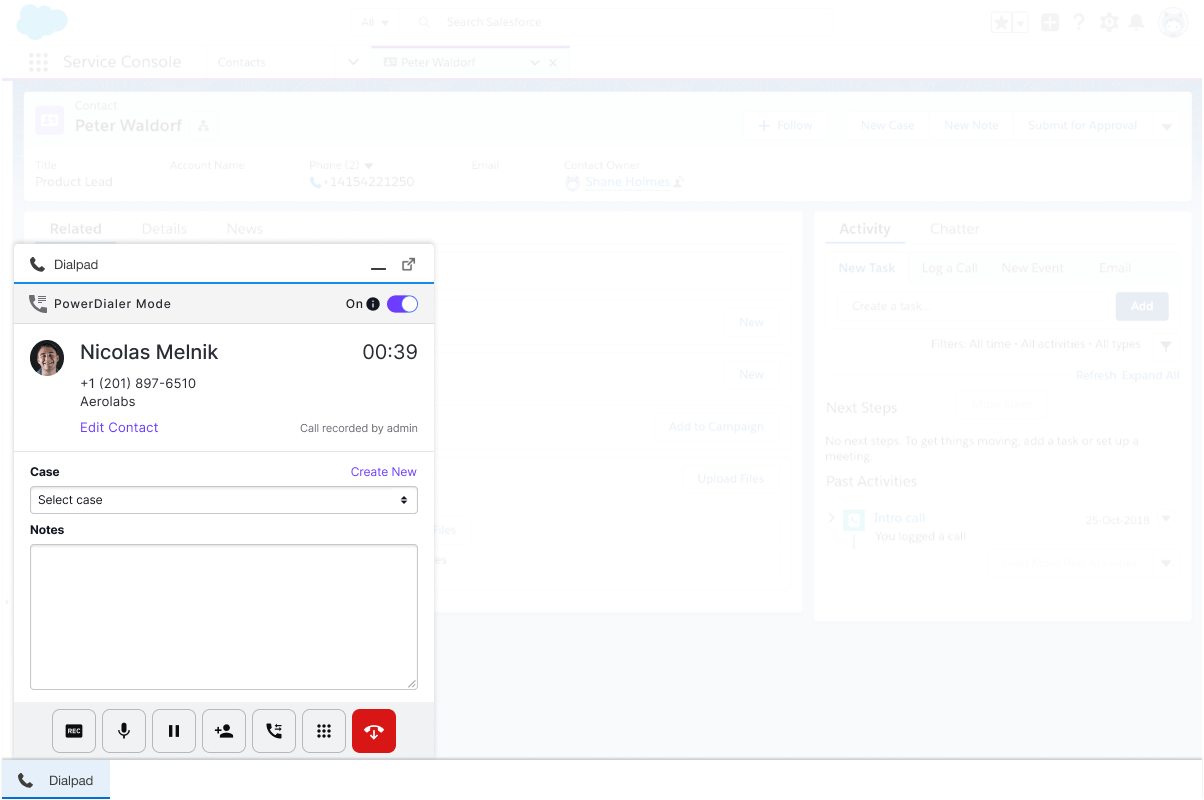
In fact, Dialpad Ai Contact Center also has comprehensive omnichannel support—including support for chat, messaging, self-service, and social media channels. So a customer can reach out via a Twitter message, use a self-service menu, then call in at a later time, and the agent will have the info they need from each of those interactions, even if they’re speaking to the customer for the first time.
In short: more and more companies are beginning to integrate all their channels onto a unified platform to centralize records of customer interactions—and ultimately to give their agents immediate and actionable insights for a seamless customer experience across every channel whether it’s digital, voice, or video.
Cloud migration
It's well-known by now that businesses—no matter the size and in every industry—can benefit from moving to the cloud. A 2021 study by Flexera found that 92% of enterprises are leveraging a multi-cloud solution, meaning that they use services offered by multiple cloud providers.
But this is just the start, and many contact center teams are still using on-premises solutions.
So, why are contact centers increasingly going to the cloud?
For starters, setting up and managing contact centers through a cloud solution is incredibly quick and easy. For instance, Dialpad customers can set up contact centers in just two minutes. Yes, it really is that quick.
How about updates and maintenance? For on-premises solutions, you have to install updates yourself, get new physical equipment when it becomes necessary, and generally handle everything on your own. On the cloud? The provider handles that. Maintenance is all managed on their end, and updates are instantly pushed out with no action required on the contact center’s side.
Not to mention how cloud contact center technology enables working from anywhere. This opens up the possibility of implementing a 24-hour contact solution by strategically positioning agents all over the world.
Remote work became essential during the COVID-19 pandemic, as contact center agents had to start working remotely. Those who used on-premise solutions had to struggle to move equipment and set their agents up in their home offices, but those who were already on the cloud (or migrated to the cloud) had no difficulties whatsoever—they just brought their computers and headsets home, and work resumed as normal. Plus, being able to work remotely is especially helpful with the next future trend…
Hybrid work
Is your team split between returning to the office and continuing to work remotely?
Do you like working from home, but also need to or occasionally enjoy going to the office?
Can your contact center benefit from hiring people regardless of their physical location?
If the answer to any of those questions is “yes,” then you can see why hybrid work is a future trend that’s growing quickly.
With a hybrid work environment, contact center agents can continue to work remotely, or they can return to the office. In some cases, the office environment is necessary, like when agents need a good quiet place to take customer calls. In other instances, like for agents who primarily handle email or messaging, working remotely is often easier and more convenient.
A hybrid work environment allows all agents to work in the environment that suits them best. It’s the perfect balance between everyone working in-office and a completely remote workforce. So as contact centers try to decide the best way to return to the office, and even in the times that follow, we’re going to see more demand for hybrid contact center solutions.
What should no contact center go without?
Now, these aren’t so much “trends” as they are “necessities.” In fact, they benefit all organizations, but especially with those with contact centers:
Scalability and flexibility
As your business and communications grow, the solutions you use should grow with you too. A major use case for cloud technology is developing and testing software—this means rather than manually configuring and maintaining a test environment, you can simply spin up the resources you need when you need them.
With a cloud contact center, you unlock the ability to set up a contact center and add users in minutes, which simply isn't possible with legacy systems. Rather than acquiring and provisioning new devices, you just add a new agent to your network and they can get started right away.
Not to mention that as companies continue to offer remote work options, employers will be expected to keep up with this trend or risk falling behind in the years to come.
Backup and storage
Your call data needs a place to live, but it doesn't have to be physically within your organization.
Where you may once have maintained expensive equipment and support for an on-premises data center, you can now outsource much of that heavy lifting to cloud storage providers. This is an excellent solution not only for hosting the files you use every day, but also for automated backups and disaster recovery.
Analytics
Business decisions are increasingly informed by data, and that trend is expected to continue through 2022. Cloud communication solutions are smarter than your typical, traditional hardware solution (and it’s no wonder, since cloud solutions often include AI and are constantly updated). So they can reveal ways to improve the customer experience, thanks built-in dashboards filled with helpful data, like call volume and common topics callers ask about.
With Dialpad Ai Contact Center, for example, you can easily track all of your important contact center metrics, including call abandon rate, average handle time, and more:
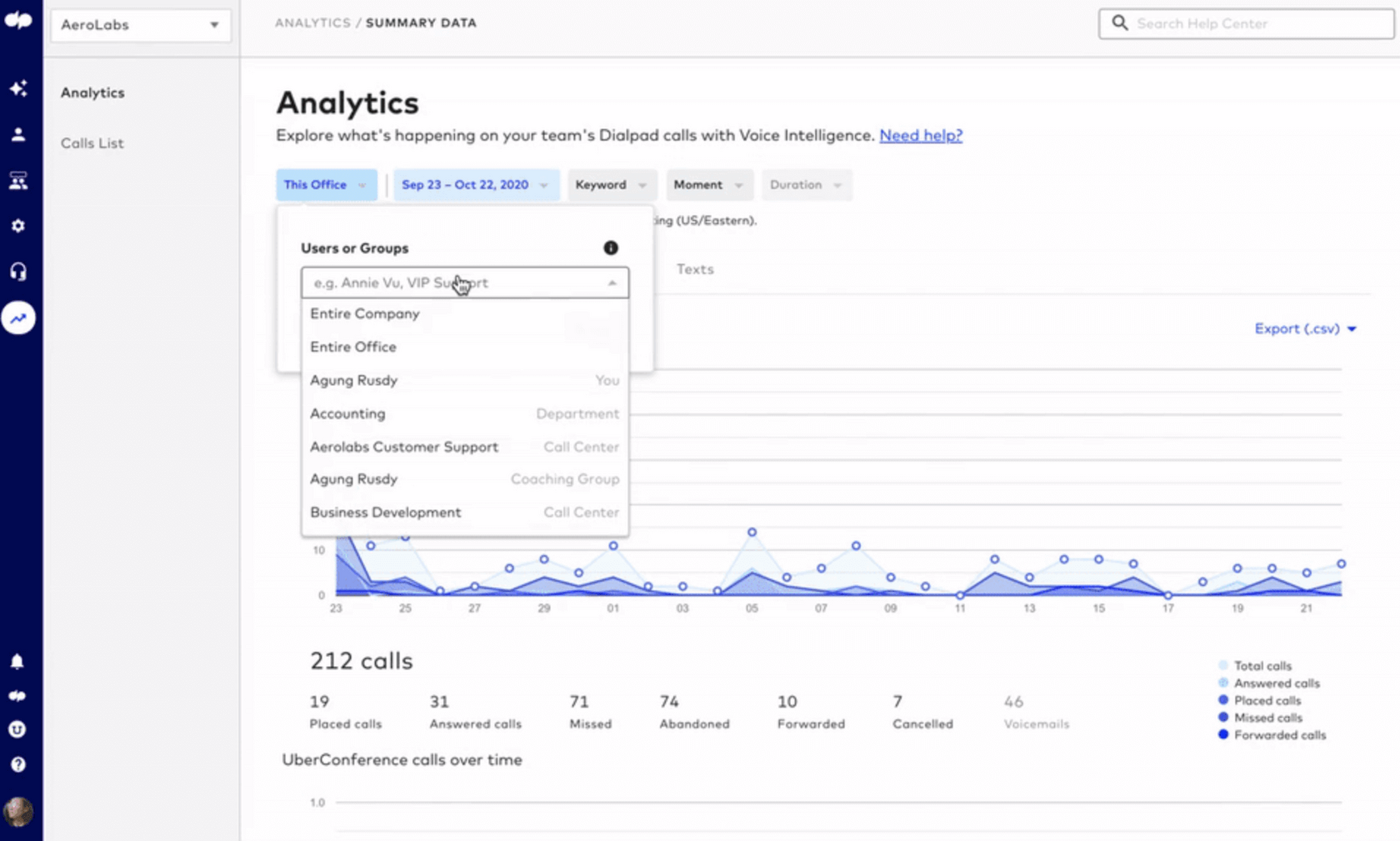
From there, you can see where your contact center might need to make adjustments, such as keeping more staff on hand for peak hours, or find areas where your training can improve.
Are you up to date on the latest contact center technology trends?
If you aren't taking advantage of these contact center trends, you might be missing out on opportunities to serve your customers better.
And if you are interested in how chatbots and call center AI can empower your agents, Dialpad can help bring your contact center into the future. You’ll find the crucial features designed to improve your team's productivity, including the latest advancements in contact center technology and the future trends yet to come.
Learn more about how Dialpad Ai Contact Center empowers your customer support and sales team.
See how



